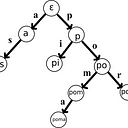Protocols in Swift Fast AF
Protocols are a powerful tool in the Swift programming language that allow developers to define a set of requirements that a class, structure, or enumeration must fulfill in order to be considered conforming to a particular protocol. In this tutorial, we will explore how protocols work in Swift and how they can be used to define reusable and modular code.
First, let’s define a simple protocol called Shape that requires conforming types to have a area property and a perimeter method.
protocol Shape {
var area: Double { get }
func perimeter() -> Double
}Now, let’s define a Circle class that conforms to the Shape protocol. To do this, we simply need to include the Shape protocol in the class declaration and implement the required area property and perimeter method.
class Circle: Shape {
let radius: Double
var area: Double {
return .pi * radius * radius
}
func perimeter() -> Double {
return 2 * .pi * radius
}
init(radius: Double) {
self.radius = radius
}
}Now, any instance of the Circle class will be considered a Shape because it conforms to the Shape protocol. We can verify this by creating an instance of Circle and calling its area and perimeter methods.
let circle = Circle(radius: 5)
print(circle.area) // 78.53981633974483
print(circle.perimeter()) // 31.41592653589793let circle = Circle(radius: 5)
print(circle.area) // 78.53981633974483
print(circle.perimeter()) // 31.41592653589793Protocols can also have optional requirements, which are methods or properties that are not required for conformance but can be implemented by conforming types if desired. To define an optional requirement, we simply need to include the optional keyword before the method or property declaration.
Let’s add an optional description property to the Shape protocol.
protocol Shape {
var area: Double { get }
func perimeter() -> Double
var description: String { get }
}Now, let’s update the Circle class to implement the optional description property.
class Circle: Shape {
let radius: Double
var area: Double {
return .pi * radius * radius
}
func perimeter() -> Double {
return 2 * .pi * radius
}
var description: String {
return "Circle with radius: \(radius)"
}
init(radius: Double) {
self.radius = radius
}
}We can now call the description property on our circle instance to see the implementation of the optional requirement.
let circle = Circle(radius: 5)
print(circle.description) // Circle with radius: 5Protocols can also be extended to provide default implementations for optional requirements or to add additional functionality to conforming types. Let’s extend the Shape protocol to add a default implementation for the description property.
extension Shape {
var description: String {
return "Unidentified shape"
}
}Now, if a class does not implement the description property, it will automatically use the default implementation provided by the extension.
In conclusion, protocols are a useful tool in Swift that allow developers to define a set of requirements that a class, structure, or enumeration must fulfill in order to be considered conforming to a particular protocol. Protocols can also have optional requirements and can be extended to provide default implementations or additional functionality for conforming types. Protocols allow for the creation of reusable and modular code and can be an important part of any Swift project.
References:
- Apple Inc. (n.d.). Protocols. Retrieved from https://docs.swift.org/swift-book/LanguageGuide/Protocols.html
- Apple Inc. (n.d.). Protocol Extensions. Retrieved from https://docs.swift.org/swift-book/LanguageGuide/Protocols.html#ID465
